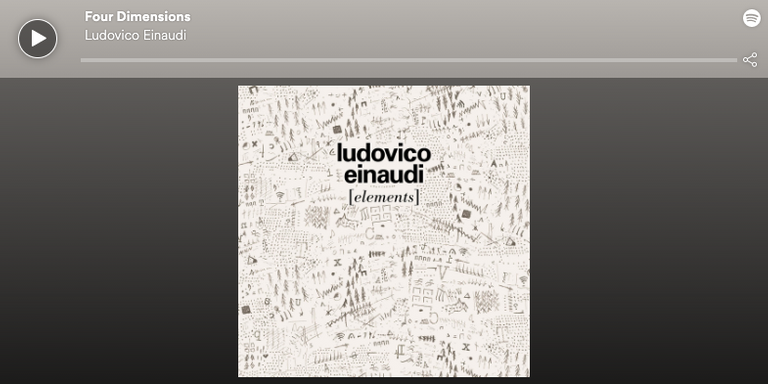
Photo by Dawid Zawiła on Unsplash
 Please listen to this soundtrack as you read
Please listen to this soundtrack as you read
Modern religions still follow the example of earlier, undeveloped tribes and exalt past religious leaders to influence present-day people who lack true spiritual knowledge. Holy books are infused into people’s minds and misinterpretations of these books are invented to fit all situations, while the ‘living book’ of individual self-cultivation and personal growth is suppressed.
— Huaching Ni, I Ching: the Book of Changes and the Unchanging Truth, p.562
Huaching Ni’s words in his commentary on XÙN cuts to the core issue of leadership which the hexagram is subtly conveying.
In the 57th hexagram from the Book of Changes, wind is following wind; one wind arises and blows, and another follows suit. This is a very interesting model for organisations, as there is an implied understanding of mutual leadership and influence. It is a model where the ‘leaders’ follow their constituents, and empower them; the constituents follow their leaders (who have earned their trust), and are able to get stuff done because they have the space created for them to devote time and energy to the work that is to be accomplished.
It is an example of an organic system of feedback and homeostasis.
Hexagram 57 XÙN, The Gentle (Wind/Wood)

The symbol
In the image of the hexagram, the governing yáng lines in the 5th and 2nd position are exemplars of this system. Their strength creates the space for those that follow their lead — the yīn lines in the 1st and 4th positions — to rise up and attend to tasks. In the Commentary on the Image, the text reads:
隨風巽君子以申命行事。 Suí fēng (XÙN), Jūnzǐ yǐ shēn mìng xíng shì.
Because they submit to the wind (XÙN), the Superior Person articulates their mandate, and their affairs are carried out.
—Hexagram 57, XÙN The Gentle, Commentary on the Image, I Ching (my translation)
‘Followers’ are not simply following blindly. A leader has firstly had to prove themselves to be trustworthy. They walk their talk and they care for others, but they are also reflective and considerate. Most importantly, they themselves ‘follow’ something. They heed to the conditions of the moment, and notice how the winds are blowing and the currents are moving. They are present to what is happening around them, including being present to the needs of those that are following them of their own accord.
They are acting as models for those that follow. What they articulate and express in the world is also an expression of their own lives and purpose; those that follow will resonate with this and naturally follow and help to actualise such things.
The text of the 5th line of the gua mentions that they don’t initiate anything, paradoxically. Because they are merely following which way the wind blows, the directions they give lead to changes being made, so that what is no longer necessary can be done away with. This is why one of the translations for the title of the hexagram is “Gently Persuasive” or “Gently Influencing”.
Gentle influence
The metaphor of the wind is sublime. We cannot see it, and yet we notice its effects everywhere. There is no more subtle an example of energy than this. And this is the point of how the Superior Person of XÙN operates as a leader or governor — they are not noticed, they are not seen, and yet their influence is everywhere.
This idea lies in stark contrast to the concept of ‘thought leaders’ and ‘social media influencers’ whose aim is to be as visible, and as widely as possible. It is a game of chasing an imaginary rabbit down the rabbit hole of inflated sense of importance and entitlement.
Instead we have in this symbol the example of leadership that is effective in carrying out what is required by the ‘spirit of the moment’ (zeitgeist), not their own needs or desires. Nothing good comes from those who are more concerned of their own image, because it is not an expression of authenticity.
While I was always aware of the description of the trigram ☴ Xùn (thus also the hexagram) as ‘the gentle’, ‘the penetrating’, and ‘wind/wood’ I never had an embodied understanding of what it represented in the world. I always likened the wind to a disruptive influence, something that brought change. What I kept missing was the ‘gentle’ bit. Maybe this is why my attempts to embody this natural principle in my Qìgōng practices always seemed to go awry.
I was trying too hard. I was pushing, forcing it; but the wind cannot be forced, neither can the tree be forced to grow. Nothing can be forced in this universe, and if it is, the consequences are never as we want them to be. I know this — and yet, I haven’t truly known it. My beliefs and understanding has been in sharp contrast to my behaviours and actions. I have known about XÙN, but not how to truly practice it, or embody it; but I’m learning more and more how to.
It’s an interesting notion: to allow my inner-Self to submit to my outer-Self, which in turn obeys the world as it is in the present context. This is the carefreeness 隨風 suífēng described in the text: one wind following another wind, a reiteration of a subtle and gentle movement in the universe that is felt everywhere.




This post originally appeared at Pandora’s Lost Gift.












Congratulations @metametheus! You have completed the following achievement on the Steem blockchain and have been rewarded with new badge(s) :
You can view your badges on your Steem Board and compare to others on the Steem Ranking
If you no longer want to receive notifications, reply to this comment with the word
STOPDo not miss the last post from @steemitboard:
Gentle Influence. That thought made me smile today more than you can imagine. Some nice pondering to take into yoga class.
Leading the curation trail for both @ecotrain & @eco-alex.
Together We’re Making This World A Better Place.
Click Here To Join the manually curated trail "@artemislives" to support quality eco-green content.